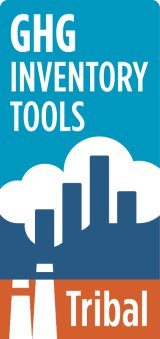Tribal Greenhouse Gas Inventory Tool

EPA’s Tribal Greenhouse Gas Inventory Tool was developed to help tribes across the United States to evaluate their greenhouse gas emissions. Use this tool to compile a greenhouse gas (GHG) inventory for your entire tribe or for tribal government operations in particular.
Download the Tribal Greenhouse Gas Inventory Tool and sign up for updates (Updated January 2025)
Watch a 1 hour webinar overview of the Local Greenhouse Gas Inventory Tool, a parallel tool to the Tribal Greenhouse Gas Inventory Tool with similar functionalities.
What is the Tribal Greenhouse Gas Inventory Tool?
This free, interactive spreadsheet tool calculates GHG emissions for many sectors, including residential, commercial, transportation, and waste and water management. The tool is comprised of two separate modules: one for community-wide inventories, the other for inventories of tribal government operations only. You may choose to use one or both modules.
The tool is pre-programmed with default emission factors and system assumptions needed to calculate emissions or you may enter community-specific information. The tool is scalable to accommodate different levels of activity data to meet the needs and constraints of different tribal governments.
Who should use the Tribal Greenhouse Gas Inventory Tool?
The tool is designed for tribal governments interested in compiling a relatively quick and simple GHG inventory. People interested in emissions from specific facilities should consult EPA data on greenhouse gas emissions from large facilities. The data set includes public information from facilities in nine industry groups that directly emit large quantities of GHGs, as well as suppliers of certain fossil fuels.
What can I do with the results?
- Create an emissions baseline
- Track emissions trends
- Assess the relative contributions of emissions sources
- Communicate with stakeholders
- Partner with other municipalities to create a regional inventory
- Develop mitigation strategies and policies
- Measuring progress toward meeting GHG reduction goals
